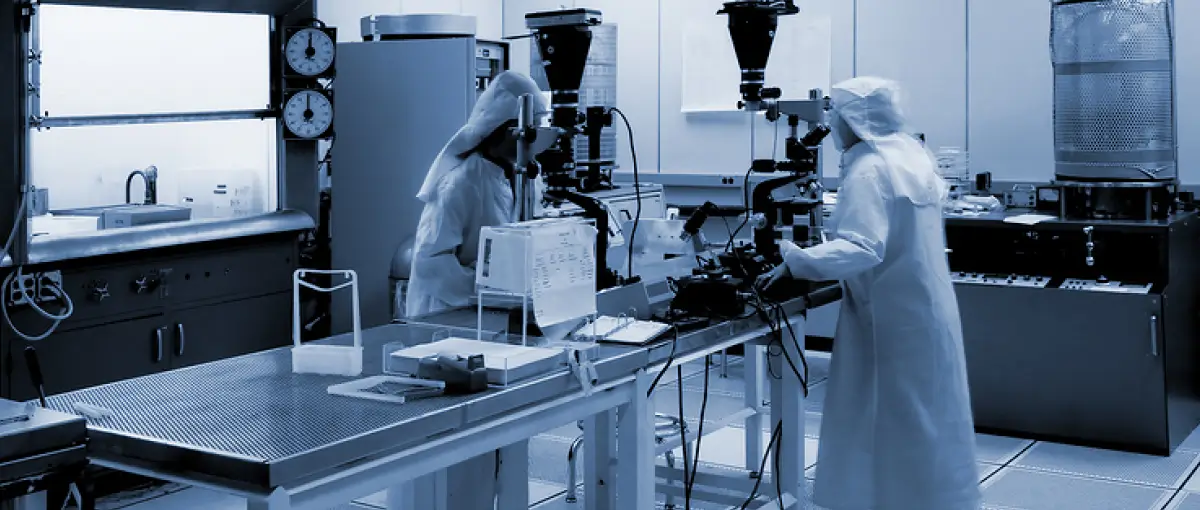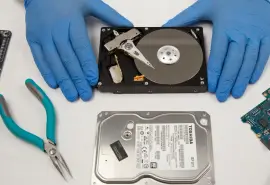To put it simply, Cleanrooms are one of the most important data recovery tools. The role of a data recovery cleanrooms are to protect against contamination during physical data recovery procedures. Cleanrooms use a system of humidity controls, temperature controls and air filters to eliminate airborne particles, creating a dust and contaminant-free environment for safe data recovery.
This is particularly important during hard drive recoveries due to the microscopic amount of clearance between hard drive actuator heads and storage platters. If the heads are offset, severe media damage can occur in a matter of seconds. Anything from a piece of dust to an engineer's finger oils can cause the actuator heads to touch the platters, immediately causing permanent damage to magnetic materials and greatly complicating the data recovery process.
Data tapes, flash drives and other digital devices can also take severe damage from microscopic contaminants. To avoid this, professional data recovery companies always treat physically damaged media in a certified Cleanroom.
When choosing a data recovery provider, you should understand the differences between various Cleanroom classifications. Fortunately, these differences are fairly easy to understand.
The Two Major Cleanroom Classification Systems
There are four systems for Cleanroom classification, but most data recovery companies use either US FED STD 209E or ISO 14644-1. Both of these standards put strict limits on the number of contaminants allowed in the environment.
The difference is the unit of measurement: US FED STD 209E measures contamination in cubic feet, while ISO 14644-1 uses cubic meters. Many data recovery companies regularly work with standard units and use the US FED classification system when describing their Cleanroom technology. Under US FED specifications, a lower number indicates fewer particles per cubic foot.
A normal room allows about one million particles sized at 0.5 µm (micrometres) or greater in each cubic foot of air. If a hard drive is opened in this type of untreated environment, some of the airborne particles could come into contact with the platters, causing damage when the drive spins up.
Class 100 Cleanrooms Vs. Class 10 Cleanrooms
To safely treat hard drives and other digital devices, a Cleanroom must meet Class 100/ISO 5 standards, which would cut this allowance to 100 particles per cubic foot. This is the absolute minimum for safe treatment, however, and Class 100 standards may be insufficient when working with newer high-density media.
At Secure Data Recovery Services, we use a certified Class 10 ISO 4 Cleanroom, which allows a maximum of 10 particles sized 0.5 µm or greater per cubic foot (about 352 particles per cubic meter under ISO 4 standards). By insisting on these specifications for our facilities, we eliminate any chance of in-lab media damage. Our engineers take extraordinary care when treating physically damaged media, and we test our Cleanroom regularly to maintain our classification. Qualified third party firms perform all of our audits, and unlike many of our competitors, we keep our certification up to date.
We also post our Cleanroom certification reports online along with our security certifications and various other credentials. At Secure Data Recovery Services, media safety is always a major priority, and we believe that our strict standards allow for higher recovery rates and faster turnaround times. Visit our Cleanroom page for more information or call our customer service team to set up a case.






